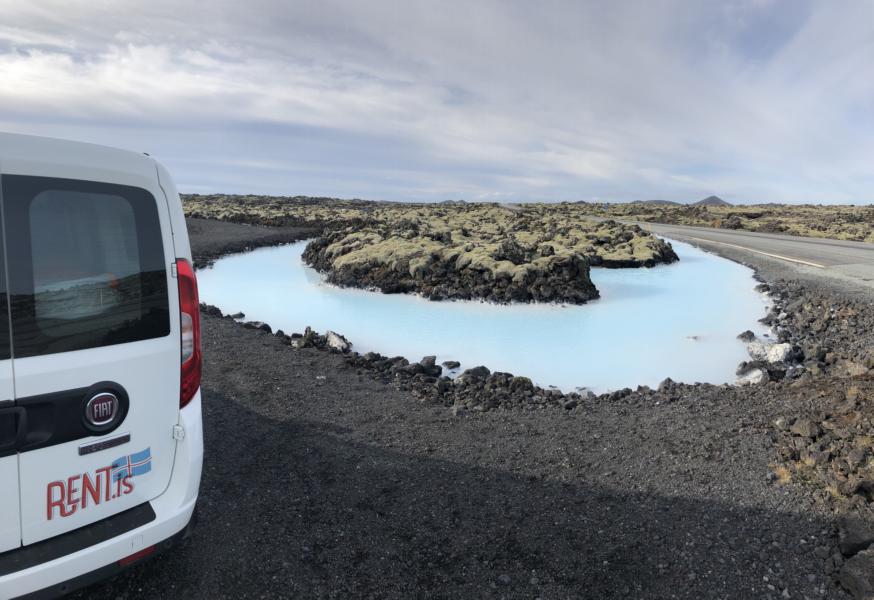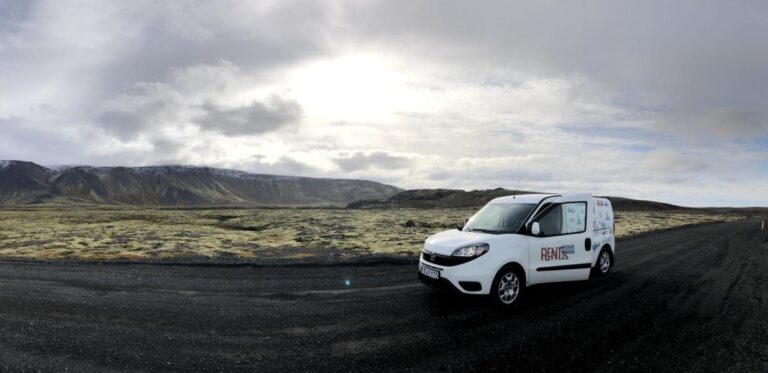Whether you’re just starting to plan your dream trip to Iceland or you’ve got your tickets ready to go, there’s one important thing you need to understand before you go: Icelandic currency. But what currency does Iceland use and what do you need to know before you go?
Don’t worry—we’ve you covered. Let’s dive into everything you need to know about currency in Iceland.

What Is the Currency in Iceland?
Iceland uses the Icelandic króna, abbreviated as ISK. It’s a currency that’s only used within Iceland. Euros and dollars aren’t accepted, so you’ll need to exchange your home currency or use a card for most purchases. Most places in Iceland are extremely card-friendly, but it’s always good to have some króna on hand, especially when exploring more rural areas where card readers might be less prevalent.
Icelandic Króna Denominations
Iceland’s currency comes in both coins and banknotes. So, what denominations make up the money and currency in Iceland? Here’s how they’re divided:
Banknote Denominations:
- 500 króna
- 1.000 króna
- 2.000 króna
- 5.000 króna
- 10.000 króna
Coin Denominations:
- 1 króna
- 5 króna
- 10 króna
- 50 króna
- 100 króna
The History of Icelandic Króna
Iceland’s currency has an interesting history, shaped largely by the island’s political and economic shifts. With so much changing over the years, what currency does Iceland take today?
The Icelandic króna (ISK) was first introduced in 1874 when Iceland was still part of the Danish kingdom. Back then, it was tied to the Danish krone.
Iceland officially became independent in 1944 – and its currency followed. Since then, the Icelandic króna has had its ups and downs, particularly during economic events like the 2008 financial crisis, which had a major impact on its value. Despite some instability, the króna remains the nation’s official currency and a symbol of Iceland’s economic independence.
Together, the króna and the Icelandic language symbolize Iceland’s unique blend of tradition and modern economic resilience.
The Faces of Icelandic Currency
Like in other countries, the money used in Iceland gives us a glimpse into the country’s history and culture. Each banknote features prominent figures who have helped shape Iceland’s identity, along with symbols that reflect its heritage.
- 500 króna: Jón Sigurðsson, a leader in Iceland’s fight for independence.
- 1.000 króna: Brynjólfur Sveinsson, a 17th-century bishop known for his scholarly work.
- 2.000 króna: Jóhannes Sveinsson Kjarval, one of Iceland’s most beloved painters.
- 5.000 króna: Ragnheiður Jónsdóttir, an influential woman from Icelandic history.
- 10.000 króna: Jónas Hallgrímsson, a poet and naturalist who played an important role in shaping modern Icelandic literature.
Iceland is Expensive
The most common question travelers have after “Iceland uses what currency?” is, “That costs how much?”. Most goods are imported from other countries, making the island an expensive destination for both tourists and locals
According to Iceland Magazine, you can expect to see prices around 66 percent higher than in the European market.
For example, a premade sandwich can cost around $10 after you’ve converted from the króna to USD. In fact, if you decide to eat out, you can expect dinner for two to start at around $100. If you’re planning on grocery shopping in Iceland, be prepared for elevated costs as well.
Travelers from America might also be surprised to be subjected to value-added tax, or VAT. While the U.S. has individual state sales taxes, VAT in Iceland is significantly higher—24% on goods and 11% on food
The prices in Iceland are also attributed to the economic strength of its currency, the high standard of living, and the fact that most goods need to be imported. However, travelers can apply for a tax-free receipt and receive a refund on the VAT when it’s time to leave Iceland, making it a bit easier to manage costs. If shopping isn’t your priority, you can still enjoy the natural wonders surrounding you without breaking the bank.
Credit Cards Are Accepted
It’s also good to keep in mind that credit and debit cards are widely accepted in Iceland, and Iceland is nearly a cashless society. Many locals go months without needing to handle cash.
Card payments—especially with Visa credit—are the preferred form of payment for most vendors, so you won’t need to worry about carrying large amounts of physical Iceland money. Ensure your card doesn’t impose foreign transaction fees if you use a card linked to your own currency.
Shopping is Tax-Free
As you spend your Iceland money, make sure that you keep your receipts. As a noncitizen of Iceland, you can apply for a VAT refund on goods costing over than 4.000 ISK (roughly $33) or more when you exit the country.
Once you’re at the airport present your passport, the receipt that showing purchase was made within the last three months, and a tax-free form provided and stamped by the store. Iceland also offers tax-free shopping at the arrivals hall at Keflavík International Airport, where you can avoid VAT charges altogether. This provides a great opportunity to save on purchases while exploring the country.
Tipping in Iceland
The tipping culture in Iceland is simple. Unlike some countries where tipping is expected in many situations, in Iceland, service charges are usually included in the price of meals, drinks, taxi rides, and even hotel stays. This means there’s no need to add an extra percentage on top of your bill, and most people simply pay exact change without leaving anything extra.
Of course, that doesn’t mean you can’t leave a tip if you want to. But here’s the important thing to remember: even if you don’t tip, the service staff won’t feel slighted or offended. It’s not ingrained in the culture the way it might be in other parts of the world. Icelanders generally don’t expect tips, and most won’t even think about it if you choose not to leave one. So, enjoy your experience without worrying about small transactions or adding that extra percentage to your bill.
Where to Exchange Your Foreign Currency
If you need to exchange currency for Icelandic króna, there are several options available throughout the country:
- Keflavík International Airport: Currency exchange services are available at the airport upon arrival. However, they don’t offer the best rates, so if you’re not in immediate need of cash, we recommend exchanging currency once you get into town.
- Landsbankinn: One of Iceland’s largest banks, it has branches across the country where you can easily exchange your money for currency to use in Iceland. Find a Landsbankinn branch.
- Arion Banki: Another major bank offering currency exchange services. Their branches are located in most major towns. Visit Arion Banki’s website.
- Íslandsbanki: With branches in most major locations. Find an Íslandsbanki branch near you.
- Downtown Reykjavik: You’ll also find currency exchange services in downtown Reykjavik, especially around the main shopping streets and tourist hubs.
- ATMs: If you prefer to withdraw local currency directly, ATMs are widely available and often offer good exchange rates. Most accept foreign cards.
Regardless of where you exchange your currency, always check the latest exchange rates to ensure you’re getting the best rates for your Icelandic króna.
Money-Saving Tips
Iceland may be an expensive destination, but visiting this amazing country doesn’t have to break the bank. Here are some smart strategies to save money while still enjoying everything the Land of Fire and Ice has to offer:
- Shop at Duty-Free: Keflavík Airport is one of the few airports with Duty-Free when you arrive. If you’re over 20 and want to have a drink or two during your trip, picking up alcohol here is a smart move since it’s much cheaper than buying it at local liquor stores, where prices can be steep.
- Drink Tap Water: There’s no need to spend money on bottled water in Iceland. The tap water is crisp, clean, and free. Just bring a reusable bottle and fill up wherever you go — it’s one of the easiest (and most sustainable) ways to cut down on costs.
- Explore the Outdoors: Iceland’s landscapes are the real treasure, and the best part? They’re free. Spend your time hiking, exploring waterfalls, or just soaking in the incredible views. Nature is the main attraction here, and it won’t cost you a thing.
- Visit Local Pools: Geothermal pools are a huge part of Icelandic culture, and they’re usually very affordable. So, instead of spending a ton in the ultra-popular Blue Lagoon, consider relaxing in a natural hot spring without spending much.
- Eat Smart: Dining out can get expensive fast. To save money, try picking up snacks or light meals at local bakeries or grocery stores. You’ll find plenty of fresh options that won’t stretch your budget, and it’s a great way to experience Icelandic food without the restaurant price tag.
- Skip Exchange Fees: Iceland is incredibly card-friendly. Most places accept credit cards, so you can void foreign transaction fees when using your card. Make sure you have a backup payment method, such as prepaid cards, in case your primary card encounters any issues.
- Stay Flexible with Accommodation: Consider a campervan or guesthouse if you’re not set on fancy hotels. They’re much more affordable and give you a more authentic experience — plus, you’ll be closer to nature.
- Fuel Up Wisely: When filling up at gas stations, keep an eye on the decimal point and be mindful of gas prices, which can be higher than you’re used to. Consider using a prepaid card to avoid transaction fees and stay within your budget.

Explore Iceland with Rent.is
Ready to experience Iceland with complete freedom? Renting a campervan from Rent.is allows you to discover the country’s breathtaking landscapes at your own pace, all while keeping your budget in check. We offer a range of Iceland camper rentals for every type of traveler. Each one is equipped to explore the rugged beauty of Iceland.
When traveling in Iceland, it’s important to remember the currency used in Iceland is the Icelandic króna (ISK), so make sure to plan accordingly. With Rent.is, you get an affordable and authentic way to see the country without expensive hotel bookings or rigid schedules. Pack your sense of adventure and hit the road — book your campervan with Rent.is or explore our Iceland travel guide for more info!
If you’re planning to explore Reykjavík, there’s no shortage of things to do. Relax in a lagoon, take a walking tour, go whale watching, and much more—all while embracing the freedom of your Icelandic adventure.
FAQs
Do I need to carry cash in Iceland?
Not necessarily. Iceland is very card-friendly, and most places accept credit and debit cards, even for small purchases. But, it’s always a good idea to have a little cash on hand for more remote areas where card readers may not be available.
Do they offer Apple Pay and Google Pay in Iceland?
Yes, both Apple Pay and Google Pay are accepted across Iceland, especially in urban areas like Reykjavik. Just make sure your device is set up for international payments.
Can you use US currency in Iceland?
No, US dollars are not accepted in Iceland. You’ll need to exchange your currency for Icelandic króna or rely on credit cards.
The króna is the only form of money used for transactions, so you’ll need to exchange your currency for Icelandic króna or rely on credit cards. It’s always a good idea to check the current exchange rate before your trip for a clearer picture of costs.
Is the euro used in Iceland?
No, Iceland uses the Icelandic króna (ISK). Euros are not accepted, so be sure to exchange your currency or use a credit card while visiting.
How much is $100 US in Iceland?
Use an online currency converter like this one. Exchange rates fluctuate, so check the latest rate before your trip.


